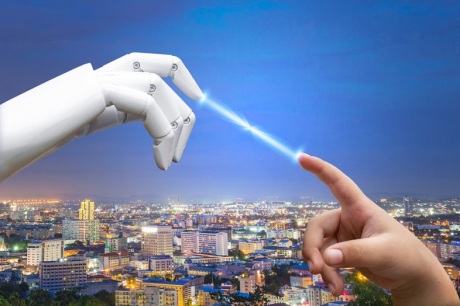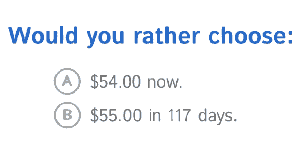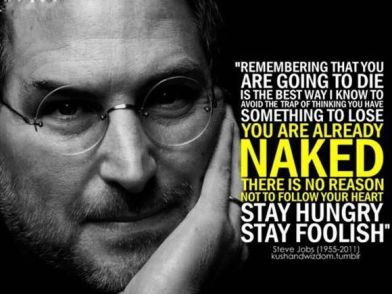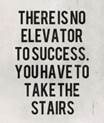 The old job search paradigm for candidates is looking for posted jobs and sending applications.
The old job search paradigm for candidates is looking for posted jobs and sending applications.
In the pre- Internet era, a job search was limited to a local network of open positions found in places like newspaper classified ads. A typical job search began by scanning local or national classified pages, applying to a handful of jobs that seemed like a reasonable fit by phone or a mailed resume, and then waiting to hear back from employers.
 In the mid-1990s, online job boards led to optimism that technology would make the job search more efficient. For the first time, online sites pulled together all job postings and made them keyword searchable to anyone with an internet connection. It was revolutionary, but it was still the same old paradigm for hiring.
In the mid-1990s, online job boards led to optimism that technology would make the job search more efficient. For the first time, online sites pulled together all job postings and made them keyword searchable to anyone with an internet connection. It was revolutionary, but it was still the same old paradigm for hiring.
Today, there is a New Paradigm that Promises to Make a Fundamental Change in Hiring
Today’s online job sites are more than just aggregators of job postings. They are employer review sites, career networking sites, and job marketplaces that collect detailed data on all sides of the job market – data on people, companies, skills and jobs.
This new paradigm for job search uses big data and machine learning to cut through the clutter of online job postings and candidates to curate a smaller, smarter set of job recommendations that better fit a candidate.
 This is possible by leveraging the vast amount of information on not only jobs and companies, but also job seekers’ personalized skills, education, and other professional experiences), job, company preferences, work locations, and more. Candidates get matched faster with jobs and companies that best fit their skills and preferences and hiring managers get smaller pools of qualified applicants.
This is possible by leveraging the vast amount of information on not only jobs and companies, but also job seekers’ personalized skills, education, and other professional experiences), job, company preferences, work locations, and more. Candidates get matched faster with jobs and companies that best fit their skills and preferences and hiring managers get smaller pools of qualified applicants.
![download[1]](https://thejobclinic.files.wordpress.com/2019/03/download1.png?w=300&h=79) Consider eHarmony. It has mastered the ability to connect people based on data using the same strategy behind its business model to tap into the market of people in search of the perfect job, rather than the perfect partner. Elevated careers by eHarmony, requires job candidates to upload a resume and fill out a profile. Profile information is then paired with eHarmony’s matching technology to connect individuals with job matches based on skills, values, and personality. Searches can be conducted based on keywords and other parameters.
Consider eHarmony. It has mastered the ability to connect people based on data using the same strategy behind its business model to tap into the market of people in search of the perfect job, rather than the perfect partner. Elevated careers by eHarmony, requires job candidates to upload a resume and fill out a profile. Profile information is then paired with eHarmony’s matching technology to connect individuals with job matches based on skills, values, and personality. Searches can be conducted based on keywords and other parameters.
It matches job seekers with potential companies based on factors involving culture, personality and skills using a “Compatibility Scorecard”. The scorecard breaks down individual and company values so both can see what they have in common to understand compatibility. Along with eHarmony’s matching technology, the scorecard pairs candidates with job listings.
Time is another issue. Recruiting takes time and money. Replacing a bad hire is expensive, costing from a 3 to 5 times a person’s annual salary, depending on their position and how long they’ve been there.
 Job seekers don’t typically like spending a lot of time filling out online job applications. In a recent report, 60% of job seekers said they’d started an online application without finishing it.
Job seekers don’t typically like spending a lot of time filling out online job applications. In a recent report, 60% of job seekers said they’d started an online application without finishing it.
Matching jobs to job seekers is complex and there’s a multi-billion dollar recruiting industry devoted to it.
Data-driven recruitment may also increase a company’s performance and boost employee engagement. Information about a candidate’s personality and how the person fits within a particular company’s culture could play a much bigger role in addressing retention, engagement and productivity among employees.
 Consider Wells Fargo. It developed a predictive model to help them with selecting qualified candidates for teller and personal banker positions. The company worked with Kiran Analytics to identify qualities that engaged high-performing employees in client-facing positions and looked for those specific qualities in potential candidates. At the end of the program’s first year, new employee retention was up by 15% for tellers and 12% for personal bankers.
Consider Wells Fargo. It developed a predictive model to help them with selecting qualified candidates for teller and personal banker positions. The company worked with Kiran Analytics to identify qualities that engaged high-performing employees in client-facing positions and looked for those specific qualities in potential candidates. At the end of the program’s first year, new employee retention was up by 15% for tellers and 12% for personal bankers.
 Job seekers will soon apply directly for jobs matching search queries, as well as view compatibility information and predicted job satisfaction with a specific organization, helping lead to higher productivity and retention among employees.
Job seekers will soon apply directly for jobs matching search queries, as well as view compatibility information and predicted job satisfaction with a specific organization, helping lead to higher productivity and retention among employees.
Sites like Monster and CareerBuilder don’t pair job seekers with positions based on compatibility, skills, values. They just present candidates with thousands of job openings.
AI is clearly making job seekers’ journeys easier. And, there’s more good news: it’s only going to get better. Growing data sets and continuous AI learning means AI platforms like WorkFusion and Scout Exchange’s will only get smarter and more efficient.
The trick for job seekers to take advantage of all AI has to offer now and in the future. Job searchers need to make sure their resumes accurately align with job performance AND skill sets. You’ll need to feed AI data to be prepared and competitive for all stages of the employment journey.
 Tesla, Accenture, LinkedIn, and many major companies are going beyond using resumes to identify candidates adding a neuroscience-based and how likely they are to succeed.
Tesla, Accenture, LinkedIn, and many major companies are going beyond using resumes to identify candidates adding a neuroscience-based and how likely they are to succeed.
 They are working with Pymetrics, a company that has distilled what used to be a 4-hour, academic process of evaluating a person’s cognitive and emotional capabilities into a 30-minute game-playing scenario. Candidates are asked to complete brain tasks (like puzzles or quizzes) and then AI comes up with measurements of things like the person’s problem-solving skills, ability to multitask and level of altruism (concern for the welfare of others) with the results measured against their own top employees.
They are working with Pymetrics, a company that has distilled what used to be a 4-hour, academic process of evaluating a person’s cognitive and emotional capabilities into a 30-minute game-playing scenario. Candidates are asked to complete brain tasks (like puzzles or quizzes) and then AI comes up with measurements of things like the person’s problem-solving skills, ability to multitask and level of altruism (concern for the welfare of others) with the results measured against their own top employees.



 Consider BTS. In 2017, K-pop group BTS broke into the American music scene. Their win as the top social artist at the 2017 Billboard Music Awards (BBMA) gave them the chance to perform at the American Music Awards, making their U.S. television debut. Their press tour included appearances on “The Ellen DeGeneres Show,” “The Late Late Show with James Corden” and “Jimmy Kimmel Live.”
Consider BTS. In 2017, K-pop group BTS broke into the American music scene. Their win as the top social artist at the 2017 Billboard Music Awards (BBMA) gave them the chance to perform at the American Music Awards, making their U.S. television debut. Their press tour included appearances on “The Ellen DeGeneres Show,” “The Late Late Show with James Corden” and “Jimmy Kimmel Live.” The only thing constraining people now is a limited ambition, lack of awareness of digital tools or insufficient knowledge to use the tools that are typically free or at a reasonable cost.
The only thing constraining people now is a limited ambition, lack of awareness of digital tools or insufficient knowledge to use the tools that are typically free or at a reasonable cost. Most people like to think of progress as a straight line.
Most people like to think of progress as a straight line. Breakthrough moments are often the result of many previous actions, which build up the potential required to unleash a major change. Often people make a few small changes, fail to see a tangible result and decide to stop.
Breakthrough moments are often the result of many previous actions, which build up the potential required to unleash a major change. Often people make a few small changes, fail to see a tangible result and decide to stop. Consider the history of the Mona Lisa, perhaps the most famous painting in the world. After having languished in obscurity for most of its early existence, Leonardo da Vinci’s work was pushed into the spotlight in 1911 when it was stolen from the Louvre. The widely publicized theft remained unsolved for two years until Vincenzo Peruggia, an Italian maintenance worker at the Louvre, was apprehended after trying to sell the painting to the Uffizi Gallery in Florence, Italy. His arrest provoked a second wave of publicity, with images of the Mona Lisa splashed around the world.
Consider the history of the Mona Lisa, perhaps the most famous painting in the world. After having languished in obscurity for most of its early existence, Leonardo da Vinci’s work was pushed into the spotlight in 1911 when it was stolen from the Louvre. The widely publicized theft remained unsolved for two years until Vincenzo Peruggia, an Italian maintenance worker at the Louvre, was apprehended after trying to sell the painting to the Uffizi Gallery in Florence, Italy. His arrest provoked a second wave of publicity, with images of the Mona Lisa splashed around the world. As in the art world, so too in the world of work. Almost every career trajectory entails a complex sequence of steps, each of which depends on those preceding it. If any of those earlier steps had been different, the entire trajectory would almost surely have been different, too.
As in the art world, so too in the world of work. Almost every career trajectory entails a complex sequence of steps, each of which depends on those preceding it. If any of those earlier steps had been different, the entire trajectory would almost surely have been different, too.
 Historical records show that typically only one third of all businesses will ever make a profit.
Historical records show that typically only one third of all businesses will ever make a profit.

 So, don’t get distracted from reaching your goals.
So, don’t get distracted from reaching your goals. The truth is that if you’re not moving forward, you’re moving backward.
The truth is that if you’re not moving forward, you’re moving backward.






 Stop for a moment and think about how this technology will change the job market as we know it. Essentially, the majority of “support employees” could be replaced by an ecommerce tied to minimal staff with the purchasing process all done from your phone. Watch this video:
Stop for a moment and think about how this technology will change the job market as we know it. Essentially, the majority of “support employees” could be replaced by an ecommerce tied to minimal staff with the purchasing process all done from your phone. Watch this video:  In Guangzhou, BingoBox has built a network of 300 fully automated convenience stores. The free-standing glass boxes, about half the size of a 7-Eleven, stock a similar assortment of merchandise, all of it labeled with RFID tags. Shoppers scan a QR code displayed on the front of the store with the WeChat app. Selected items are placed on a counter, and an RFID reader instantly and tallies the total. Shoppers pay via a mobile phone. A scanner near the door verifies that a customer is leaving with only the goods they paid for.
In Guangzhou, BingoBox has built a network of 300 fully automated convenience stores. The free-standing glass boxes, about half the size of a 7-Eleven, stock a similar assortment of merchandise, all of it labeled with RFID tags. Shoppers scan a QR code displayed on the front of the store with the WeChat app. Selected items are placed on a counter, and an RFID reader instantly and tallies the total. Shoppers pay via a mobile phone. A scanner near the door verifies that a customer is leaving with only the goods they paid for.
 The Return of the Automat
The Return of the Automat Retina Scanner – These scan the unique biometric pattern in each person’s iris, and match it against a certain number of unique identifying marks that set every person apart from everyone else. Iris scanning and retinal scanning are both used to identify a person according to their unique pattern, but they tend to be far costlier and more complex.
Retina Scanner – These scan the unique biometric pattern in each person’s iris, and match it against a certain number of unique identifying marks that set every person apart from everyone else. Iris scanning and retinal scanning are both used to identify a person according to their unique pattern, but they tend to be far costlier and more complex. Each person around the world has a distinctly unique face, even two twins that the human eye cannot tell apart. It may be something as small as the slightly different placing of the eyebrows, the width of the eyes, or the breadth of the nose. There are certain markers that enable these biometric recognition scanners to instantly identify the uniqueness of each person scanning their facial features, thus enabling the device to ensure that only the single person with the correct bone structure and feature placement can gain access.
Each person around the world has a distinctly unique face, even two twins that the human eye cannot tell apart. It may be something as small as the slightly different placing of the eyebrows, the width of the eyes, or the breadth of the nose. There are certain markers that enable these biometric recognition scanners to instantly identify the uniqueness of each person scanning their facial features, thus enabling the device to ensure that only the single person with the correct bone structure and feature placement can gain access. Every person in the world has a unique voice pattern, even though the changes are slight and barely noticeable to the human ear. However, with special voice recognition software, those tiny differences in each person’s voice can be noted, tested, and authenticated to only allow access to the person that has the right tone, pitch, and volume of voice. It’s surprisingly effective at differentiating two people who have almost identical voice patterns.
Every person in the world has a unique voice pattern, even though the changes are slight and barely noticeable to the human ear. However, with special voice recognition software, those tiny differences in each person’s voice can be noted, tested, and authenticated to only allow access to the person that has the right tone, pitch, and volume of voice. It’s surprisingly effective at differentiating two people who have almost identical voice patterns.




 Getting referred was the best way to get a job. It only took 12 people to hire someone this way. This is 10X better than applying. According to the Lever data only 14% of all jobs were filled by referrals.
Getting referred was the best way to get a job. It only took 12 people to hire someone this way. This is 10X better than applying. According to the Lever data only 14% of all jobs were filled by referrals. Get found. Reverse engineer your LinkedIn profile and online resume to make sure recruiters can find it. When they find it make sure your major accomplishments and track record are instantly visible.
Get found. Reverse engineer your LinkedIn profile and online resume to make sure recruiters can find it. When they find it make sure your major accomplishments and track record are instantly visible. Really know the company.
Really know the company. Don’t just tell. Show.
Don’t just tell. Show. Be the one who knocks.
Be the one who knocks.




 Music-generating algorithms are now inspiring new songs. Given enough input—millions of conversations, newspaper headlines and speeches—insights are gleaned that can help create a theme for lyrics. There are machines such as Watson BEAT that can come up with different musical elements to inspire composers. AI helps musicians understand what their audiences want and to help determine more accurately what songs might ultimately be hits.
Music-generating algorithms are now inspiring new songs. Given enough input—millions of conversations, newspaper headlines and speeches—insights are gleaned that can help create a theme for lyrics. There are machines such as Watson BEAT that can come up with different musical elements to inspire composers. AI helps musicians understand what their audiences want and to help determine more accurately what songs might ultimately be hits. and John Deere is getting data-driven analytical tools and automation into the hands of farmers. They acquired Blue River Technology for its solution to use advanced machine learning algorithms to allow robots to make decisions based on visual data about whether or not a plan is a pest to treat it with a pesticide. The company already offers automated farm vehicles to plough and sow with pinpoint-accurate GPS systems and its Farmsight system is designed to help agricultural decision-making.
and John Deere is getting data-driven analytical tools and automation into the hands of farmers. They acquired Blue River Technology for its solution to use advanced machine learning algorithms to allow robots to make decisions based on visual data about whether or not a plan is a pest to treat it with a pesticide. The company already offers automated farm vehicles to plough and sow with pinpoint-accurate GPS systems and its Farmsight system is designed to help agricultural decision-making. Google is using AI and satellite data to prevent illegal fishing. On any given day, 22 million data points are created that show where ships are in the world’s waterways. Google engineers found that when they applied machine learning to the data, they could identify why a vessel was at sea. They ultimately created Global Fishing Watch that shows where fishing is happening and could then identify when fishing was happening illegally.
Google is using AI and satellite data to prevent illegal fishing. On any given day, 22 million data points are created that show where ships are in the world’s waterways. Google engineers found that when they applied machine learning to the data, they could identify why a vessel was at sea. They ultimately created Global Fishing Watch that shows where fishing is happening and could then identify when fishing was happening illegally. amazing success while others work just as hard but achieve very little? What’s their secret?
amazing success while others work just as hard but achieve very little? What’s their secret? Preparing Yourself for Consistent Action
Preparing Yourself for Consistent Action






